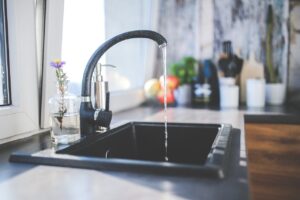Cleaning beer bottles thoroughly is essential for anyone involved in home brewing, collecting, or simply looking to repurpose bottles for various uses. Proper cleaning ensures the removal of any residues, odors, and potential contaminants, guaranteeing a safe and pleasant experience whether you’re filling them with homemade brews or using them as decorative items. This article will guide you through the best practices for cleaning beer bottles efficiently and effectively.
Initial Rinse
Immediately after emptying a beer bottle, it’s crucial to give it a quick rinse with hot water. This preliminary step helps to remove the majority of the residual beer and prevents the buildup of molds and odors. Simply hold the bottle under running hot water and shake it gently to ensure the water reaches all inside surfaces. Drain the water out and repeat if necessary until the rinse water appears clear.
Soaking
For bottles that have been sitting for a while or have stubborn residues, soaking is a highly effective method. Fill a large basin or sink with a mixture of warm water and an appropriate cleaning agent. Options include unscented oxygen-based cleansers, which are excellent at breaking down organic materials without leaving behind any scents, or a solution of baking soda and vinegar for a more natural approach. Submerge the bottles fully in the solution and let them soak for at least an hour, though overnight soaking might be necessary for particularly stubborn cases.
Brushing
After soaking, some bottles may still have residues clinging to the inside surfaces. This is where a long-handled bottle brush becomes invaluable. These brushes are specifically designed to reach all the way to the bottom of the bottle and scrub off any remaining debris.
Insert the brush into the bottle and use a twisting motion to scrub thoroughly, making sure to touch all surfaces for a complete clean.
Sterilization
For home brewers, sterilization is a critical step that follows cleaning. Even if you’re not brewing, sterilizing bottles before use is a good practice to eliminate any potential bacteria.
You can use a no-rinse sterilizer, which involves soaking or spraying the bottles with a sterilizing solution and then allowing them to dry without rinsing. Alternatively, you can boil the bottles for at least 10 minutes in a large pot, then remove them with tongs and let them dry upside down on a clean towel.
- Drying and Storage
Once cleaned (and sterilized, if necessary), allow the bottles to air dry completely before storing them. Drying them upside down ensures that all water drains out, preventing the growth of mold or bacteria. Store the dry bottles in a cool, dry place away from direct sunlight until you’re ready to use them.
Tips for Effective Cleaning
Always wear gloves to protect your hands from hot water and chemicals during the cleaning process.
Consider investing in a bottle rinser or washer if you’re cleaning large quantities of bottles regularly. These tools can significantly speed up the cleaning process.
Label removal can be made easier by soaking the bottles in a warm water solution with baking soda. After soaking, labels typically peel off more easily, and any adhesive residue can be scrubbed away.
Cleaning beer bottles thoroughly is straightforward but requires attention to detail and patience. By following these steps, you can ensure that your bottles are not only clean but also safe for whatever purpose you have in mind. Whether you’re a home brewer or simply looking to reuse bottles in a creative way, proper cleaning is the foundation of a successful and satisfying experience.
Ensuring Consistency in Cleaning
Maintaining a consistent cleaning routine is key to ensuring the longevity and usability of your beer bottles, especially for those engaged in home brewing. Consistent cleaning prevents the accumulation of residues that could interfere with the brewing process or affect the taste of your beer. Here are additional tips to ensure consistency:
Develop a Routine: Make cleaning and sterilizing part of your brewing routine. Clean bottles right after use and sterilize them before each brewing session to minimize the risk of contamination.
Keep Track: If you’re dealing with a large number of bottles, it might be helpful to keep track of which ones have been cleaned and sterilized. This can be as simple as keeping separate storage areas for cleaned vs. uncleaned bottles or using a tagging system.
Advanced Cleaning Techniques
For those looking to take their bottle cleaning to the next level, especially in the context of home brewing, there are more advanced techniques and tools that can be utilized:
Ultrasonic Cleaners: These devices use ultrasonic waves to clean objects at a microscopic level, making them incredibly effective for thoroughly cleaning beer bottles. While more of an investment, they’re worth considering for serious home brewers.
Chemical Sanitizers: Beyond basic sterilization, chemical sanitizers offer a high level of cleanliness. Products like Star San or Iodophor are popular in the brewing community for their effectiveness and ease of use.
Handling Stubborn Stains and Odors
Occasionally, you might encounter bottles with particularly stubborn stains or odors. Here are strategies to tackle these challenges:
For Stubborn Stains: Soaking in a stronger cleaning solution may be necessary. A paste made from baking soda and water can be applied directly to stains, left to sit for a few hours, and then scrubbed away. For very tough stains, a diluted bleach solution can be used, but ensure that the bottles are thoroughly rinsed and sterilized afterward to remove any bleach residue.
For Persistent Odors: Fill the bottle with a solution of one part vinegar to five parts water and let it sit overnight. Vinegar is excellent for neutralizing odors without leaving a harmful residue. Just make sure to rinse the bottles thoroughly afterward to remove any vinegar smell.
The key to effective beer bottle cleaning lies in a combination of thoroughness, proper techniques, and consistency. Whether you’re preparing bottles for home brewing or repurposing them for other uses, a clean and sterilized bottle is essential for ensuring the quality and safety of its contents. By investing time in proper cleaning practices and possibly some specialized tools, you can maintain a collection of bottles that are always ready for use, reflecting the care and dedication you bring to your craft or project.




